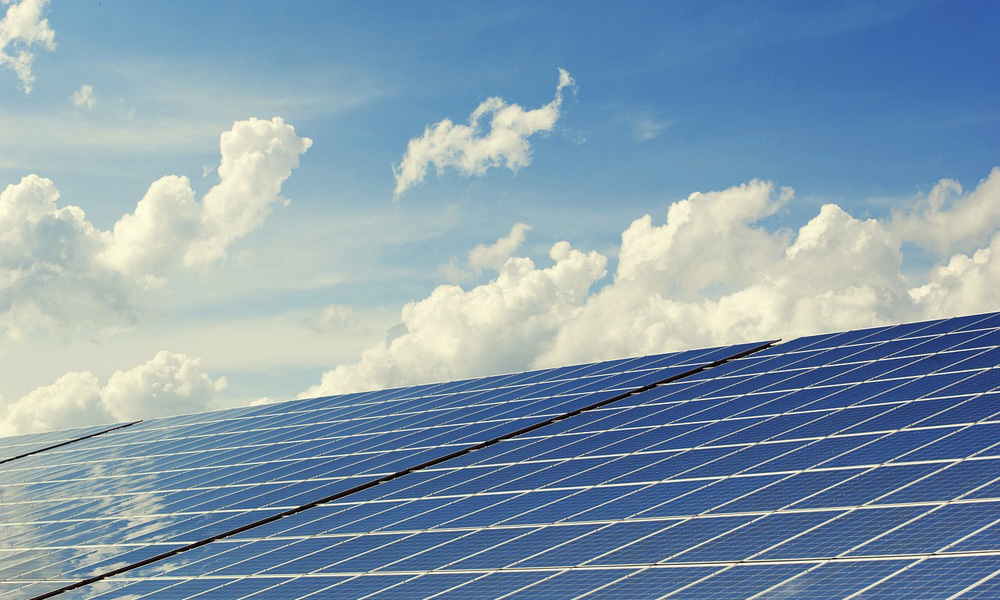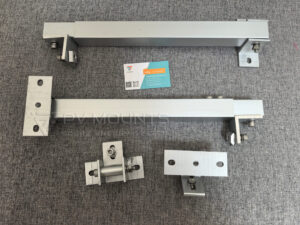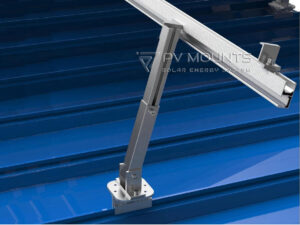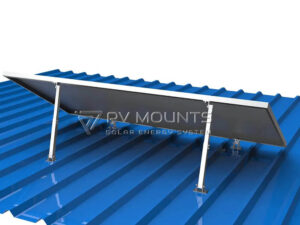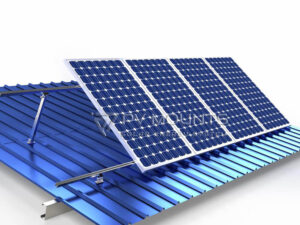Learn the essentials of safeguarding solar panels against hurricanes, ensuring your renewable energy system remains secure and operational in the face of nature’s challenges.
Table of Contents
Introduction
In regions where the sun generously bestows its energy and hurricanes occasionally unleash their fury, the robustness of solar mounting systems is not just a technical concern but a necessity for resilience and sustainability. This article embarks on an exploratory journey into the nexus of solar energy and hurricane preparedness, shedding light on the pivotal aspects of solar mounting systems and their capability to withstand the wrath of hurricanes. Aimed at empowering homeowners, business operators, and solar power advocates, this discourse navigates through the technological, practical, and strategic measures essential for fortifying solar investments against the unpredictability of severe weather phenomena.
Understanding Solar Mounting Systems
At the core of any solar energy setup are the mounting systems, the unsung heroes that anchor the shimmering panels to the ground, roofs, or poles. These systems are not merely about holding the panels in place; they are the critical foundation ensuring the panels’ survival and functionality during the violent outbursts of hurricanes. The conversation around solar mountings in hurricane-prone zones gravitates towards their durability and resilience.
Types of Solar Mounting Systems
Solar mounts come in various designs, each tailored to the environment and the specific needs of the installation. Ground mounts, roof mounts, and pole mounts are the primary types, each with its nuances in hurricane resistance. Ground mounts, with their low-profile and sturdy base, offer excellent stability against strong winds. Roof mounts need to be meticulously secured to prevent uplift, while pole mounts, often used in rural or remote areas, must withstand not just the wind but also the torque and twisting forces hurricanes can generate.
RECOMMENDED ARTICLE: Different Types of Solar Mounting Structures
Importance in Hurricane Prone Areas
In areas frequently visited by hurricanes, the choice and installation of solar mounting systems become a critical decision matrix. The system must be engineered to endure not just the high winds but also the potential for flying debris and torrential rains. This segment of the article will delve into the engineering principles, material choices, and installation strategies that contribute to the resilience of solar mounting systems in the face of hurricanes, emphasizing the importance of robust, well-designed mounts to ensure the continuity of power generation even under severe weather conditions.
Risks of Hurricanes on Solar Panels
Hurricanes, with their powerful winds and punishing rains, pose a formidable threat to solar panels. The risks extend beyond the immediate physical damage to encompass the potential for prolonged system outages and the consequent disruption of power supply.
Physical Damages
The physical impact of hurricanes on solar panels can range from minor surface abrasions to complete destruction. High winds can dislodge panels from their mounts, hurl debris that can crack or shatter the solar cells, and in extreme cases, cause the entire system to collapse. The structural integrity of the mounting system plays a crucial role in mitigating these risks, highlighting the need for a design that can withstand the dynamic and static forces imposed by hurricane conditions.
System Disruptions
Beyond the immediate physical damage, hurricanes can lead to system disruptions that affect the performance and output of solar power installations. Electrical components may be exposed to moisture, leading to short circuits or corrosion. The alignment of panels may shift, reducing their efficiency and necessitating recalibration or realignment post-storm. This section will explore the multifaceted risks posed by hurricanes to solar systems and the strategies to mitigate these risks, ensuring minimal disruption and swift recovery of solar energy production post-event.
Engineering Solar Systems for Hurricane Safety
The engineering of solar systems for hurricane safety is a meticulous process. It demands a deep understanding of the forces at play during a storm. Engineers focus on designing systems robust enough to handle the high winds and flying debris common in hurricanes.
Design Considerations
The design process starts with a thorough analysis of the potential wind speeds and directions in the installation area. This analysis influences the choice of mounting system and its anchoring methods. Engineers consider factors like wind load, which is the force exerted by the wind on the solar panels and mounting structure. They also account for uplift, which could pull the system off its base. The goal is to minimize these risks by optimizing the design for aerodynamics and stability.
Material Selection
Materials used in constructing solar mounts are selected for their strength, durability, and corrosion resistance. Stainless steel and aluminum are popular choices because they withstand the elements well. Engineers also consider the fatigue resistance of materials. This is important because materials weaken over time with repeated exposure to strong winds and varying pressures.
Installation Best Practices
Proper installation is critical to the durability of solar mounting systems, especially in hurricane-prone areas. Installers must adhere to best practices to ensure the system can withstand severe weather conditions.
Site Assessment
Before installation, a comprehensive site assessment is necessary. This evaluation identifies the optimal location for the solar panels, considering factors like sun exposure, ground stability, and wind patterns. In hurricane-prone areas, it’s crucial to avoid flood zones and areas where high winds are funneled.
Secure Mounting Techniques
Using secure mounting techniques is vital for hurricane resistance. This includes using appropriate fasteners, bolts, and anchoring systems that are designed for high wind resistance. The mounting hardware should be checked and tightened regularly as part of routine maintenance. Proper sealing and waterproofing of all joints and connections help prevent water damage during storms.
By focusing on these engineering and installation aspects, solar systems can be better prepared to withstand the harsh conditions brought by hurricanes. This careful approach not only protects the physical investment in the solar panels but also ensures a more consistent power supply during and after hurricane events.
Case Studies: Surviving the Storm
Exploring real-world examples provides valuable insights into how solar mounting systems can withstand hurricanes. These case studies illustrate the effectiveness of proper design, installation, and maintenance.
Real-World Examples
Numerous instances show solar installations surviving intense hurricanes with minimal damage. For example, after Hurricane Irma hit Florida, many solar systems remained intact and functional. These systems had robust mounts and were installed following strict engineering guidelines. These examples serve as testament to the effectiveness of meticulous planning and execution in solar system design.
Lessons Learned
Each hurricane event offers lessons for improving solar system resilience. One key takeaway is the importance of regular maintenance and inspection. Systems that were regularly checked and maintained fared better during hurricanes. Another lesson is the need for flexible design strategies that allow for some movement of the panels, reducing the risk of structural failure.
Maintenance and Post-Hurricane Inspections
Regular maintenance and post-hurricane inspections are crucial for the longevity and efficiency of solar power systems.
Routine Checks
Routine maintenance includes checking the structural integrity of mounts, ensuring fasteners are tight, and looking for signs of wear or corrosion. Inspecting the electrical components for signs of damage or exposure to moisture is also important. These checks help identify potential issues before they can be exacerbated by a hurricane.
After the Hurricane
Post-hurricane inspections are critical to assess any damage and restore the system to its optimal operating condition. Even if a system appears undamaged, thorough inspections can uncover hidden issues, like micro-cracks in the panels or loosened mounting components. Prompt repairs and replacements can prevent long-term performance issues.
Insurance and Warranty Considerations
Understanding the insurance and warranty aspects of solar systems is essential for financial protection against hurricane damage.
Coverage Types
Insurance for solar systems can vary. Some policies cover damage to the panels and mounting system, while others might include loss of income due to system downtime. It’s important to understand the specifics of the coverage and ensure it meets the needs of the installation.
Claim Process
Navigating the claim process after a hurricane can be challenging. Documentation of the damage, including photographs and detailed notes, is crucial for filing a successful claim. Working with the insurance company’s adjuster and providing all necessary documentation can expedite the process.
By integrating these practices and considerations, solar system owners in hurricane-prone areas can enhance the resilience of their installations. This not only protects their investment but also contributes to the stability of the power supply during and after hurricanes.
Future of Solar in Hurricane Zones
The outlook for solar power in hurricane-prone areas is promising, thanks to ongoing advancements in technology and changes in regulatory landscapes. These developments are aimed at making solar systems more resilient and efficient, even in the face of severe weather.
Technological Advancements
Innovations in solar technology are continually improving the durability and efficiency of solar systems. For instance, new solar panel designs feature more robust frames and glass that can withstand high winds and debris impacts. Mounting systems are also evolving, with designs that automatically adjust the panel angle based on wind speed to minimize damage.
Policy and Regulatory Changes
Policies and regulations are adapting to encourage the installation of hurricane-resistant solar systems. Incentives for using high-quality materials and following best installation practices are becoming more common. These changes are designed to ensure that solar installations can endure the harsh conditions brought by hurricanes, thus providing a reliable power source.
FAQs
This section addresses common queries related to solar mounting systems and their hurricane resilience.
How can I ensure my solar system is hurricane-ready?
Regular maintenance, proper installation, and using hurricane-rated materials are key steps to ensure solar system readiness for hurricanes.
What should I do with my solar system after a hurricane?
After a hurricane, inspect the system for damage, check for electrical issues, and contact a professional for a thorough assessment and necessary repairs.
Are there specific solar panels that are better suited for hurricane-prone areas?
Yes, solar panels designed for high wind resistance, featuring durable materials and robust construction, are better suited for these areas.
How does insurance cover solar systems in hurricane zones?
Insurance coverage can vary, so it’s crucial to have a policy that specifically covers hurricane-related damages to solar installations.
Can solar mounting systems be upgraded to improve hurricane resistance?
Yes, upgrading to more robust mounting systems can significantly enhance hurricane resistance.
Solar mounting systems play a crucial role in the resilience of solar energy infrastructure in hurricane-prone regions. By understanding the risks, employing robust engineering and installation practices, and staying informed about maintenance and insurance, solar system owners can mitigate the impact of hurricanes. The future holds promise for even more resilient solar solutions, ensuring that renewable energy remains a viable and reliable option, even in the most challenging conditions.


